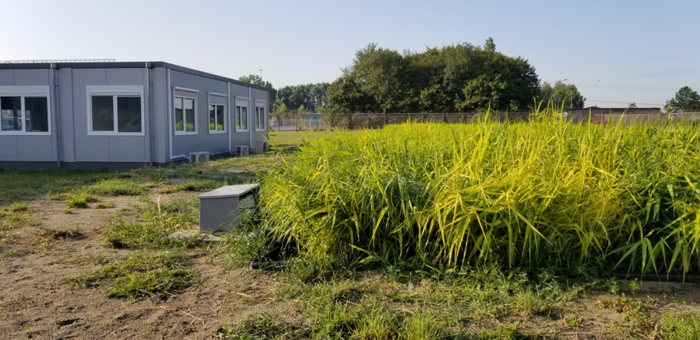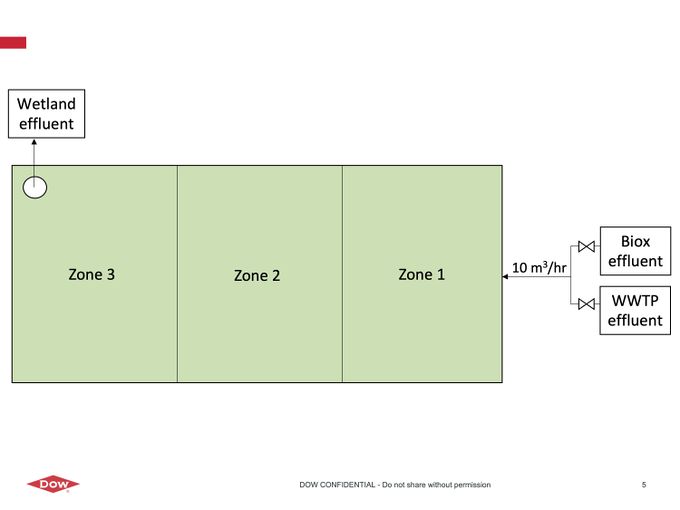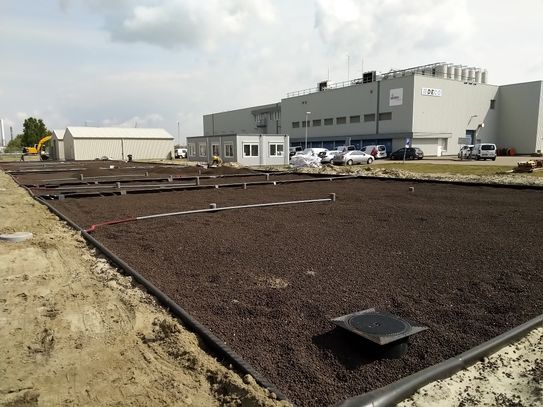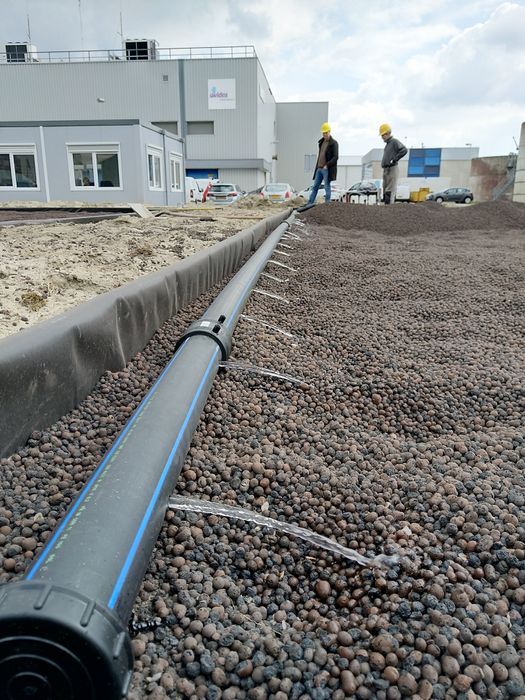PR 00310: verschil tussen versies
(Samenvatting aangepast) |
Geen bewerkingssamenvatting |
||
| Regel 44: | Regel 44: | ||
Upon comparing myself to when I first started at DOW, I can see that I have gained important professional qualities which will be incredibly useful in the future. Students from UGent and TU Delft, Evides, lecturers from the HZ, and companies in the construction industry were all involved with this project created a very dynamic working environment. I was able to realise the importance of what I was doing and the responsibility that I had, and could then find a way to support the team whilst gaining a great deal myself. I am thankful for the opportunity. | Upon comparing myself to when I first started at DOW, I can see that I have gained important professional qualities which will be incredibly useful in the future. Students from UGent and TU Delft, Evides, lecturers from the HZ, and companies in the construction industry were all involved with this project created a very dynamic working environment. I was able to realise the importance of what I was doing and the responsibility that I had, and could then find a way to support the team whilst gaining a great deal myself. I am thankful for the opportunity. | ||
[[Bestand:Louis Johnston.jpg|gecentreerd|miniatuur|500x500px|Setting up the pilot installation]] | [[Bestand:Louis Johnston.jpg|gecentreerd|miniatuur|500x500px|Setting up the pilot installation]] | ||
{{Project config}} | {{Project config}} | ||
{{Project | {{Project | ||
|Name=TKI: Wetlands as pre-treatment for mild desalination | |Name=TKI: Wetlands as pre-treatment for mild desalination | ||
|Supercontext=PR_00020 | |Supercontext=PR_00020 | ||
|Start date=2019 | |Start date=2019-09-15 | ||
|End date=2021 | |End date=2021-07-15 | ||
|Summary= | |Summary=Het doel van dit project is om te onderzoeken hoe een combinatie van aangelegde moerassen als voorbehandelingsproces en een ontziltingsbehandelingstrein kan helpen bij het verwijderen van microverontreinigingen, nutriënten en zoutgehalte. | ||
|Show summary=Nee | |Show summary=Nee | ||
|SummaryEn=The goal of this project is to investigate how a combination of constructed wetlands as a pre-treatment process and a desalination treatment train can help to remove micro-pollutants, nutrients and salinity. | |||
|Contact person=Gebruiker:Mireille martens | |Contact person=Gebruiker:Mireille martens | ||
|Stakeholder=STKH 00050,STKH 00095 | |Stakeholder=STKH 00050, STKH 00095 | ||
|Show extra=Ja | |Show extra=Ja | ||
|Show navigation tree=Ja | |Show navigation tree=Ja | ||
Huidige versie van 29 okt 2024 om 16:42
From 2019 - 2021 Dow, Evides and HZ University of Applied Sciences worked on a TKI subsidized project aiming to investigate how a combination of wetlands as pre-treatment and desalination processes can effectively remove micro-pollutants, nutrients and salinity from wastewater treatment plant effluent. The hypothesis was that wastewater treatment plant effluent is one of the most difficult streams to treat for removal of micro-pollutants and nutrients, so if it can be achieved on this stream then it can also be applied to other streams such as (brackish) surface water. It is believed that the micro-pollutants will be adsorbed in the root zone of the wetland vegetation and the nutrients will be taken up by the bacteria living on the roots of the plants, meaning that the remaining impurities such as salts are removed with a combination of ultrafiltration (UF), ion exchange (IX) and reverse osmosis (RO).
Research on the wetlands alone was carried out independently from summer 2019 to summer 2020. Research on the “brackish water line”; namely the treatment train consisting of ultrafiltration, ion exchange and reverse osmosis in sequence, began in January 2020 and ran until summer 2020 after which the wetlands were connected to the brackish water line as a pre-treatment step to run until summer 2021. A polishing step such as a mixed bed which would be needed to achieve demi water quality is out of the scope.
The influent water used in the research consists of effluent from a local Membrane Bio Reactor (MBR) and effluent from an industrial wastewater treatment plant (Biox). These influents were tested separately and also as a mixed stream, with and without wetland treatment.
The whole process proved to be successful and viable to full scale implementation, which will be the next step towards becoming more independent on external water sources in the region of Zeeuws-Vlaanderen.
Publications and abstracts
Niels Groot (Dow/HZ) presented the first wetlands results at Industrial Water 2020. The abstract is: Dow’s Sustainable Water Use Strategy and the presentation is here.
The following abstracts were submitted to the International Symposium on Wetland Pollutant Dynamics and Control (WETPOL 2021):
- AERATED WETLANDS AS PRETREATMENT FOR MILD DESALINIZATION PROCESS AT DOW TERNEUZEN
- PHYTO-AIR SYSTEM FOR EFFLUENT POLISHING: EFFECT OF CONTROLLED AERATION ON COD AND NITROGEN REMOVAL
- EFFECT OF CARBON DOSING ON DENITRIFICATION IN AN AERATED CONSTRUCTED WETLAND RECEIVING HIGH HYDRAULIC LOAD
Mireille Martens and Lies Hamelink made an overview of the performance of the wetland, and can be found here: Report Wetland performance 2019-2021.
Finally, Evides Industriewater reported on the full performance of the combination of wetlands and mild desalination: Wetlands & hybrid desalination at Dow Terneuzen
Student Experiences
Lies Hamelink - HZ Water Management
Lies researched ion exchange (IX) technology as a desalination treatment step after the wetlands with the aim to upgrade the water quality to industrial or agricultural standards.
To provide a sustainable source of fresh water for the industry in Zeeuws Vlaanderen the reuse of effluents streams is researched in a Joint Development Project with Evides Industriewater and Dow Terneuzen. Effluent from the wastewater treatment plant of the municipality Terneuzen and industrial effluent from Dow is treated with constructed wetlands followed by a brackish waterline. This brackish waterline exists of ultrafiltration, ion exchange and reverse osmosis, and is researched for its potential to produce demi water.
An ion exchange unit is used to research the removal of specific anions and cations to desalinate the water and to reduce biofouling and scaling on the reverse osmosis membranes. Ion exchange resins, as the name says, exchange ions during the production, until they are exhausted. Then the resins need to be regenerated to make them functional again. Therefore, chemicals are used, mainly HCl, NaOH and NaCl. Several experiments have been performed on lab and pilot scale to find the most efficient regeneration settings for different resins. To reduce the amount of chemical use for the regeneration, a model will be built to predict the needed amount of chemicals.
The model gives the most effective regeneration parameters to reach a certain operating capacity. The parameters considered are concentration of the chemical, flow rate of injecting the chemical and the contact time of the chemical with the resin. The model is based on data from different experiments. First, it will be checked whether data from the same resins on the different scales are comparable and reliable. Then, functions will be made based on the data, which will be used to build the model.
In the end, a model for three different resins is expected which is based on data from both lab and pilot scale and can be applied on full scale. The model gives the regeneration settings with the lowest chemical use to reach a certain operating capacity. With this model, the regeneration can be optimized and the chemical use will be more effective.
Han Cao - HZ Water Management
My objective for this research is to find the best operational settings for the denitrification process such as dissolved oxygen (DO) concentration, carbon source concentration, and hydraulic retention time (HRT) in the constructed wetland. The wetland is divide into three zones, and we can control the DO concentration for each zone, currently, we need nitrification first that nitrify ammonium to nitrate, this has to under aerobic condition. Then we have denitrification process, the nitrogen will be removed from the water. So we set the first zone as an aerobic zone, the DO concentration is around 2.5 mg/L. The second zone will be an anaerobic zone for denitrification, there is a carbon dosing system at the beginning of this zone to provide a carbon source for denitrification, by setting different carbon dosing concentration to find the best carbon and nitrogen (C:N) ratio. The last zone will be an aerobic zone again in order to biodegrade the organic carbon. Besides, on the site, I daily check the wetland situation, monitor the influent and effluent parameter. I also take grab samples to double-check with the online sensors.
Wetland configuration:
Wetland construction finished:
Wetland influent system:
Louis Johnston: Aquatic Eco-Technology
As part of my 3rd year studying Aquatic Eco-Technology B.Sc. at the HZ University of Applied Sciences, I was offered an internship at DOW Benelux on a new pilot project looking to reduce the company’s reliance on fresh water taken from the Biesbosch. I applied for the internship because I wanted to gain more of an insight into DOW’s operations as a global company and sustainability activity. Furthermore, I wanted to establish how such a global company acts on its sustainability goals and how easily environmental issues can be made economically viable.
The pilot project at DOW explores the reduction of the company’s reliance on Biesbosch water (currently at 20%) on a pilot scale, with the goal of running a full scale system once optimization of the treatment steps have been fully explored. The company objective is to reuse 100% of used water by 2025, with a constructed wetland as the first pre-treatment step.
My role between September 2019 and January 2020 consisted of optimizing and maintaining the wetland before its connection to further pre-treatment pilots in June 2020. Over 4 months, I encountered troubleshooting difficulties, carried out dissolved oxygen tests, tracer tests, and performed daily grab sampling, comparing the COD and NO3 with the analyser results to test reliability becoming an important task. I also monitored the dissolved oxygen, temperature, pH, flow, and total suspended solids of the wetland, reporting weekly and monthly to the larger team.
Upon comparing myself to when I first started at DOW, I can see that I have gained important professional qualities which will be incredibly useful in the future. Students from UGent and TU Delft, Evides, lecturers from the HZ, and companies in the construction industry were all involved with this project created a very dynamic working environment. I was able to realise the importance of what I was doing and the responsibility that I had, and could then find a way to support the team whilst gaining a great deal myself. I am thankful for the opportunity.






